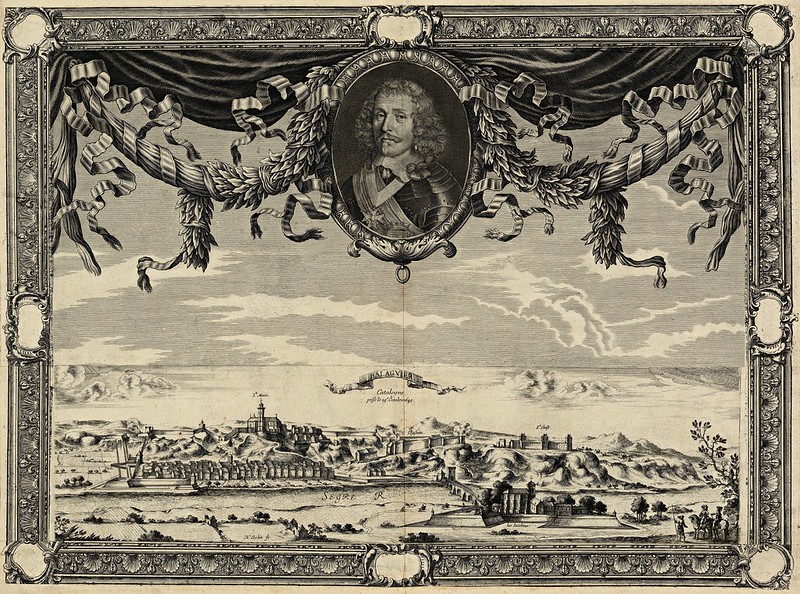Joan Baptista Pla (1720-1773) & Josep Pla i Agustí (c.1728-1762) - Concert per a dos oboès (c.1754)
Performers: Sebastián Gimeno (oboè); Manuel Angulo (oboè); Capella
Bydgostiensis; Joan Lluís Moraleda (director)
Engraving: Sébastian de Pontault Beaulieu (c.1612-1674) - Balaguier, Catalogne prise le 19e octobre 1645
---
Spanish composer and woodwind player. Although nothing is known about
his childhood or education, he came from a family of prominent musicians
from the Catalan region of Spain, who were all educated and employed at
the royal court in Madrid. He first appears as a member of the band of
the Royal Guard there around 1740. Following a brief appointment at the
court in Lisbon, in 1751 along with his brothers Josép Pla and Manuel
Pla, he began touring as part of an oboe duo with his brother Josép.
These included visits to Paris and London, but in 1754 he was appointed
to the court orchestra of Duke Karl-Eugen of Württemberg in Stuttgart.
In 1769, following the death of his brother, he moved back to Lisbon to
become court bassoonist there, publishing a series of coauthored trios
in London and Paris. He is said to have died while on a visit to Paris
to arrange other publications. Over 30 trios for two melody instruments
and basso in the galant style, as well as two concertos (one flute, one
oboe) survive, although it is unknown which of the two brothers actually
composed them. In addition, there exists an Italian aria that can with
certainty be ascribed to Joan Pla.
Spanish composer and oboist. Like his brothers Joan Pla and Manuel Pla,
he probably grew up in Madrid, where in 1744 he is listed as an oboist
in several court theatre productions. In 1751 he teamed up with his
brother Joan to tour Europe, the same year as he appeared in concert in
Paris at the Concerts spirituels. He returned to Madrid in 1754, but
five years later he joined his brother in Stuttgart, where he spent the
remainder of his short life. It is uncertain how much music he composed,
since attribution and collaboration with his brother seems to have been
common. Only a Stabat mater from 1756 can be ascribed with any
certainty.

Echeminga Dominga
ResponElimina